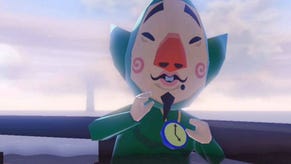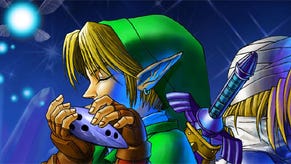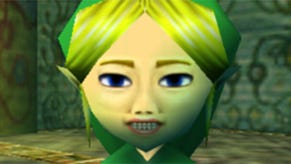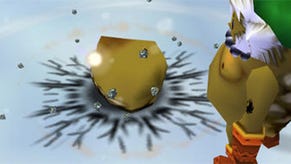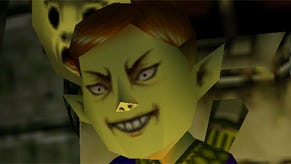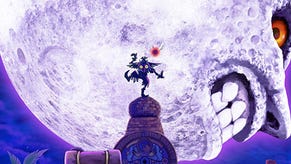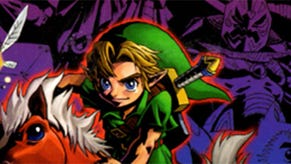USgamer Club: The Legend of Zelda: Majora's Mask 3D Part 1 — A Terrible Fate
Join Bob for a discussion of Link's arrival in Termina to the end of the Woodfall Temple.
This article first appeared on USgamer, a partner publication of VG247. Some content, such as this article, has been migrated to VG247 for posterity after USgamer's closure - but it has not been edited or further vetted by the VG247 team.
Hello again, and welcome to another edition of USgamer Club. As with Kat's approach to Suikoden II, I'll be asking for and responding to your comments as we play through the entirety of The Legend of Zelda: Majora's Mask 3D. And while I'd still like to hear what you have to say about this early portion of the game, be sure to leave your thoughts for the next chunk of Majora's Mask in the comments section of this article. In Part 2, we'll be covering everything up to the end of the Great Bay Temple, so be sure to contribute by Sunday, February 22!
[Note: For the sake of convenience, the images in this article are from the original N64 version of Majora's Mask. (Courtesy of Zeldapedia.)]
Zelda games are typically front-loaded with a lot of tutorials, but, in the case of Majora's Mask, you get the feeling the developers knew their audience—coming fresh off of 1998's Ocarina of Time—didn't need a nudge in the right direction. Though this 3DS remake provides a little more guidance than the N64 original, it's astounding to see how much freedom you're given in the very beginning of Majora's Mask. (Even if you're stuck in the body of a Deku Scrub.)
Of course, it helps that you're limited to the confines of Clock Town for this initial three-day cycle. With the broad directive of "get your Ocarina back," Link's basically left to his own devices, giving players an incentive to explore on their own terms. Having gone through Majora's a few times in the past, I'd long since memorized the few steps necessary to reach the top of the Clock Tower, but, during Majora's original release, I wasn't so lucky. I believe it took me a few cycles to put together all of the clues, with each attempt bringing me a bit closer to success. I'm actually curious as to whether or not the increased friendliness of Majora's 3D has made it so most people nab the Ocarina within the first three-day cycle.

The reason this first part of our USgamer Club only covers up to the end of the first dungeon is simply because there's just so much going on in Clock Town—that's why Majora's initially traps you within its walls for the first few hours. I can see how some could find this restriction too confining, but Clock Town features quite a few citizens to meet, and some with schedules that fluctuate based on the time of day. Majora's only gives a few denizens of Clock Town a truly active life—most remain in their standard spots, only delivering new dialogue based on the current point of the three-day cycle—but there's enough variation to their behavior to give this strange little town the illusion of life.
What I love most about Majora's Mask's opening—and Clock Town in general—is the fact that Link and his problems don't really matter much to the people he meets. Because they're so wrapped up in their impending doom, the people of Clock Town don't exactly have time for a little visiting Deku Boy and his problems—in fact, it's directly stated that most of Clock Town's population has already fled for shelter. (A great excuse for the designers to limit its population to roughly 20 distinct characters.) And, since Majora's Mask places way more of an emphasis on other people's stories rather than Link's, he plays guardian angel for most of the game, helping people out for what meager rewards they have to give. There's usually something worthwhile in it for Link, but for the player, that piece of heart can't really compare to the satisfaction of seeing one of Clock Town's many vignettes play out in its entirety.
There's a lot going on in Clock Town that isn't necessarily quest-related, too. Just by exploring and talking to people, you can get a real sense of character dynamics and personality. Take, for instance, the councilmen's feud with the soldiers over whether or not to evacuate the town: It doesn't necessarily have a happy end, but it's interesting to watch this antagonistic relationship play out over the course of the game. And observation can even yield a wealth of information about the environments themselves. The Stock Pot Inn may seem like a typical fantasy RPG destination, but it has a real lived-in quality that many of Majora's environments exude—a quality that's communicated much better with the improved graphics of the 3DS remake.
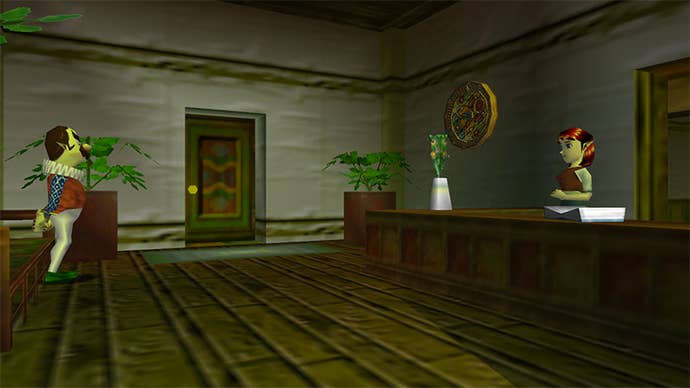
Walk around the Stock Pot Inn, and you may notice a few things: A bug or two crawling around in some rooms, a toilet with no privacy (and apparently the only one in all of Clock Town), and a diary entry by Anju's grandmother where she recounts how bad the cooking is there. And if you manage to speak with the Goron named Link in the few minutes he's available, he'll even mention how rotten some of the floorboards are. Who knew the Stock Pot Inn was such a dump?
Even in this early stage of the game, plenty of side quests become available to Link. Before heading to Woodfall, you can pick up the Great Fairy Mask (a necessity), the Blast Mask, the Bremen's Mask, Kafei's Mask, Kamuro's Mask, and the Bunny Hood—which should always be assigned to one of your item slots. Though the other three main areas are made inaccessible to Link, Majora's Mask lets players poke around their outskirts without too much anxiety over possible confusion—I think Skyward Sword's Fi would have a panic attack if she witnessed Link screwing around with masks instead of making a beeline for the swamp. It's so much more enjoyable to get a tantalizing preview of an area you're not equipped to explore, rather than being yanked back by an invisible leash and scolded for not understanding your priorities.
And then we have the swamp. Personally speaking, it's one of Termina's least interesting areas, though it is interesting to see the Deku race fleshed out a bit. In Ocarina, they seemed to be traveling merchants with no real home, but in Majora's they apparently have a kingdom of sorts. And with the improved controls and frame rate, the stealth section has become pretty easy—I remember what a nail-biting experience it was to grab that piece of heart while escaping the guards' attention in the original.
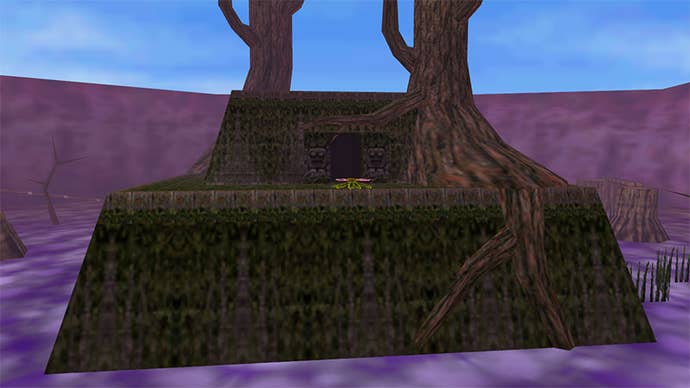
Once you make it to Woodfall Temple, you may be surprised at how small it is for a Zelda dungeon; most of Majora's Temples aren't very big because they're all designed to be completed in one three-day cycle at the absolute max—and without the Inverted Song of Time. In order to make the most of these small areas, Majora's drops in another optional objective for each Temple: Finding all 15 fairies. Some are hidden in remote corners, some only appear when you interact with the environment in certain ways, and others materialize once you've cleared the room of enemies. Collectibles like this usually feel like padding, but these optional fairies bring some great and permanent upgrades to Link if you manage to find them all and reunite them. Don't be surprised if you dive back into a dungeon immediately after finishing off the boss to get the last few stragglers you missed the first time around.
Fighting Odolwa, the boss of Woodfall Temple, reveals some of the more interesting changes to Majora's Mask 3D. Previously, I always thought Odolwa was one of the worst bosses in a 3D Zelda game; the fight with him always struck me as particularly artless, without more to it than "hit thing with weapon." This time around, it's a little different: Link can bomb Odolwa from above in Deku form, then drop to the ground and immediately start pounding on the very Majora's Mask-y eye this previous attack reveals. It's still an easy battle, mind you, but this time, there's a bit more skill involved.
And so, this brings us to the end of this first GameClub installment—after finishing Woodfall Temple, hopefully you raced the Deku butler while wearing a performance enhancing Bunny Hood. I'll be back next Monday to talk about the next section of the game, so be sure to play up to the end of Great Bay Temple, and leave your thoughts about that section (and this one as well) in the comments section below. See you then!

